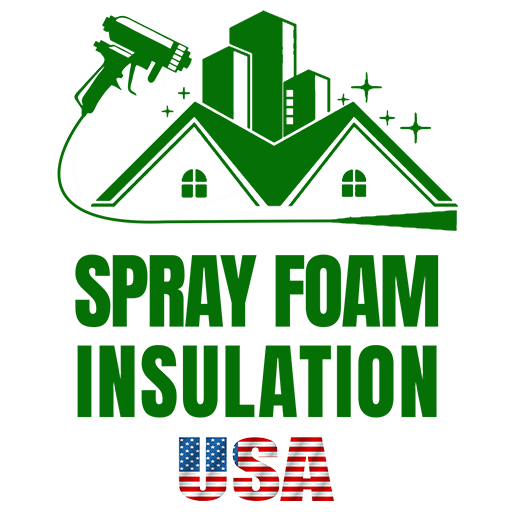Spray foam insulation has become an increasingly popular choice for insulating your home or commercial property due to its superior thermal performance and versatility. However, one of the first decisions you must make when considering spray foam insulation is opting for closed-cell vs open-cell foam insulation.
Each type has unique properties and advantages; understanding these differences is crucial for choosing the right type for your needs.
Understanding Closed-Cell Spray Foam Insulation
Closed-cell spray foam is a denser and more rigid type of insulation. Its name comes from the tiny, closed cells packed tightly together, making the foam impervious to air and moisture infiltration.
The density of closed-cell foam typically ranges from 1.75 to 2.2 pounds per cubic foot. Its R-value (a measure of thermal resistance) can be as high as R-7 per inch, making it one of the most effective insulators on the market. The rigidity of closed-cell foam provides additional structural support, making it ideal for use in areas where added strength is beneficial, such as in walls, roofs, and around foundations.
Its moisture-resistant properties make it an excellent choice for environments prone to high humidity or potential water damage, like basements or crawl spaces. However, these benefits come at a cost—closed-cell spray foam is more expensive than its open-cell counterpart in terms of material and installation.
Understanding Open-Cell Spray Foam Insulation
In contrast, open-cell spray foam is less dense, typically around 0.5 pounds per cubic foot, and is characterized by intentionally left open cells. This structure makes the foam softer and more flexible, with an R-value of around R-3.5 to R-4 per inch.
While it may not provide the same level of thermal resistance as closed-cell foam, open-cell foam still offers excellent insulation and is particularly effective at reducing noise transmission, making it a great choice for interior walls or areas where soundproofing is essential.
One key advantage of open-cell spray foam is its cost-effectiveness. It is generally more affordable than closed-cell foam, making it a popular choice for large-scale projects or when budget constraints are a primary concern.
Additionally, because it expands more than closed-cell foam, it can be applied in hard-to-reach areas and effectively fill gaps and crevices, providing a more airtight seal. However, open-cell foam is more susceptible to moisture absorption, which can be a drawback in specific environments.
It’s not recommended for use in areas with high humidity or where the insulation might come into contact with water unless an additional vapor barrier is installed.

Making the Right Choice for Your Insulation Needs
Deciding between closed-cell and open-cell spray foam insulation depends mainly on your specific needs and circumstances. If you need maximum insulation performance, added structural strength, and moisture resistance, closed-cell spray foam is likely the better choice. Open-cell spray foam may be the way to go if you want a more affordable solution that provides good insulation and soundproofing.
Consulting with experts is essential to making the best decision. Spray Foam Insulation USA can help you weigh up the pros and cons of each option and determine the correct type of insulation for your project.
Their experienced team can also handle the application process, ensuring that your insulation is installed correctly and effectively, maximizing your energy efficiency and comfort investment.
Isolate your home today and don’t worry tomorrow! Contact us today!





